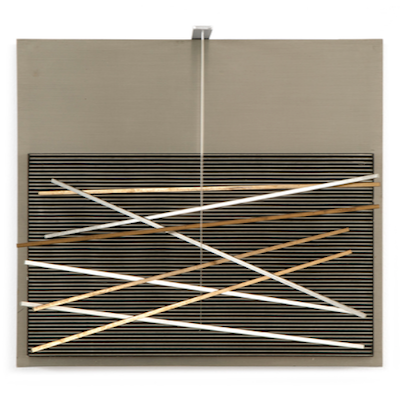
Details
Artist
Styles
Multiple silk screen, sand on canvas mounted on wood, in 6 sections, edition 18, signed and numbered. // Ouroboros (natural sand) by Günther Uecker is a monumental screen print that combines natural sand and silkscreen techniques, forming a large circular composition symbolizing the ancient motif of the ouroboros—a serpent or dragon eating its own tail, representing the cycle of life, death, and rebirth. Created in 2018, this work is part of a limited edition of 18 and is meticulously crafted in six sections, mounted on wood. The use of sand adds a tactile, organic texture, giving the piece a unique depth and earthiness that contrasts with its minimalist form. With dimensions of 300 cm by 300 cm, Ouroboros commands space, inviting contemplation on themes of eternity and the interconnectedness of nature.
Ouroboros (natural sand), 2018
form
Medium
Size
300 x 300 cm
- Inches
- Centimeters
Edition
Price
- USD
- EUR
- GBP
Details
Artist
Styles
Multiple silk screen, sand on canvas mounted on wood, in 6 sections, edition 18, signed and numbered. // Ouroboros (natural sand) by Günther Uecker is a monumental screen print that combines natural sand and silkscreen techniques, forming a large circular composition symbolizing the ancient motif of the ouroboros—a serpent or dragon eating its own tail, representing the cycle of life, death, and rebirth. Created in 2018, this work is part of a limited edition of 18 and is meticulously crafted in six sections, mounted on wood. The use of sand adds a tactile, organic texture, giving the piece a unique depth and earthiness that contrasts with its minimalist form. With dimensions of 300 cm by 300 cm, Ouroboros commands space, inviting contemplation on themes of eternity and the interconnectedness of nature.
- Recently Added
- Price (low-high )
- Price (high-low )
- Year (low-high )
- Year (high-low )
What is kinetic art?
Kinetic art is an international movement that emerged in the 1920s and gained prominence in the 1960s, referring to art that involves both apparent and real motion. It encompasses any medium that includes movement, either relying on actual motion for its effect or being perceived as moving by the viewer. Early examples include canvas paintings designed to create optical illusions of movement. Today, kinetic art often refers to three-dimensional figures and sculptures, such as those operated by machines or those that move naturally. The movement covers a variety of styles and techniques that frequently overlap.































